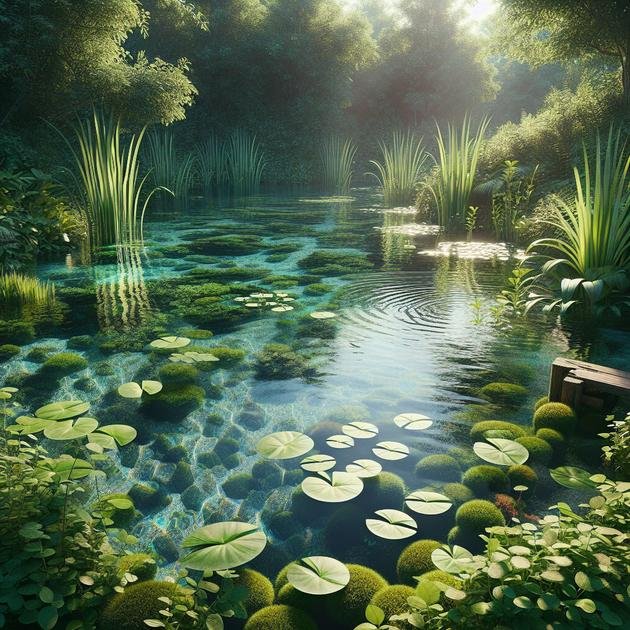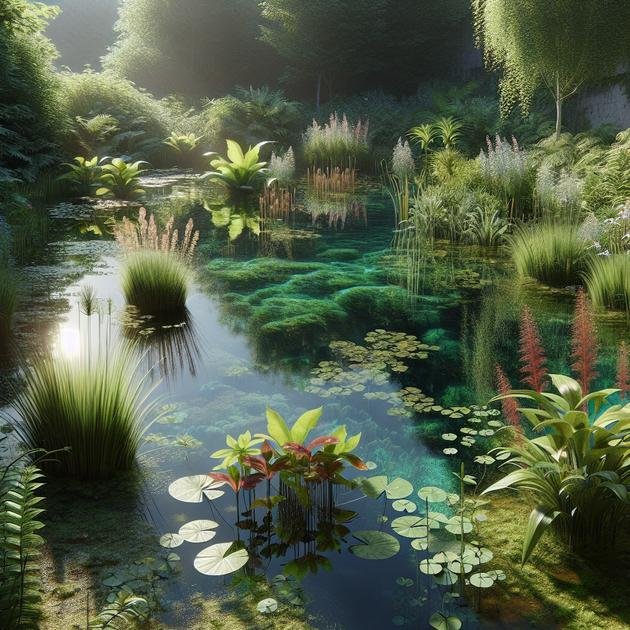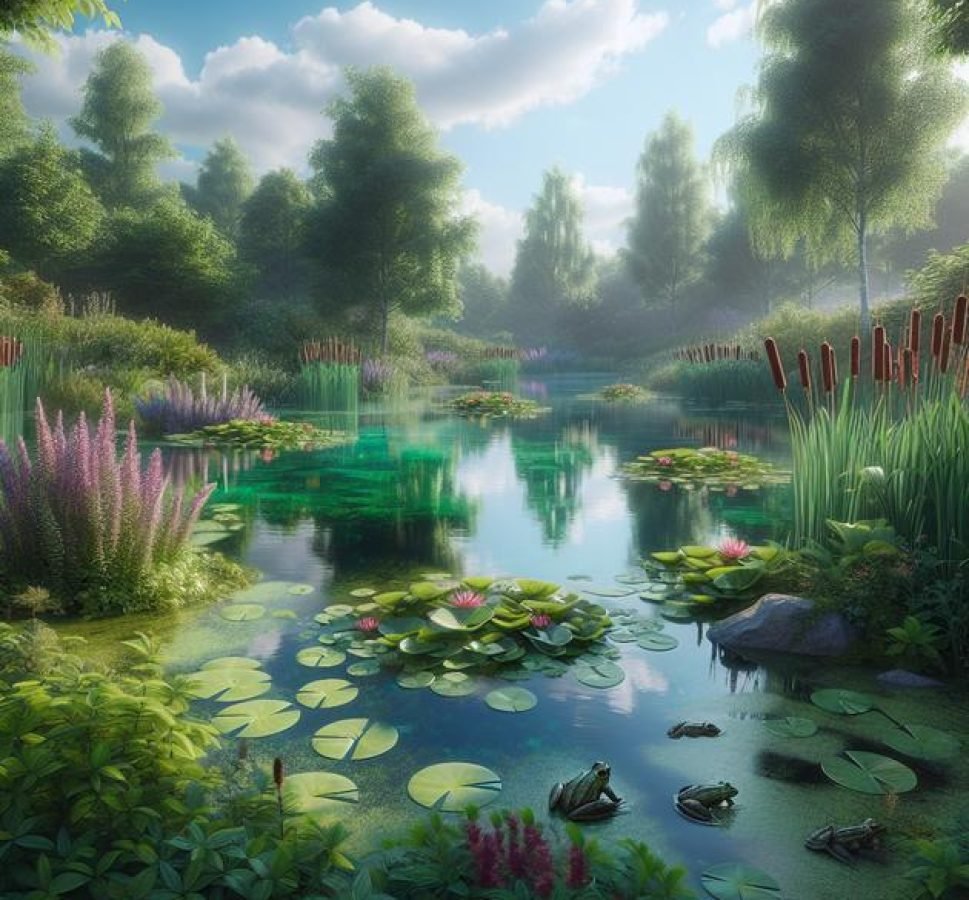Natural pool alternatives are eco-friendly water features that use plants and biological filtration to maintain clean, chemical-free swimming environments while supporting local wildlife and reducing maintenance costs.
Exploring natural pool alternatives can totally change the vibe of your yard while caring for the planet. Ever thought about turning your outdoor space into a lush, eco-friendly oasis? Let’s dive into options that blend nature and fun without the chemical overload.
understanding natural pools and their benefits
Natural pools are water features designed to blend seamlessly with the environment, using natural filtration systems instead of chemicals. They mimic the way ponds and lakes cleanse themselves through plants and microorganisms. This process keeps the water clear and safe for swimming without the harsh effects of chlorine or other chemicals.
Key benefits of natural pools
Eco-friendly design: Natural pools avoid synthetic chemicals, reducing environmental impact and supporting local wildlife. They create habitats for plants, frogs, and beneficial insects.
Cost savings over time: By relying on natural filtration, maintenance costs tend to be lower, and the need for expensive chemicals is eliminated.
Health advantages: Swimming in chemical-free water is gentler on skin and eyes, making natural pools a healthier choice for families and pets alike.
Aesthetic appeal: These pools are often designed with rocks, plants, and natural shapes that complement gardens and outdoor landscapes beautifully.
Year-round enjoyment: Depending on your climate, natural pools can offer a pleasant swimming experience for much of the year and may also serve as decorative water features during colder months.
different types of natural pool alternatives
There are several types of natural pool alternatives that blend sustainability with beauty, each offering unique features suited to different yards and preferences. A popular option is the natural swimming pond, which uses plants and biological filters to keep water clean. These ponds often include a swimming zone separated from the regeneration zone filled with aquatic plants that naturally filter the water.
Bio pools are similar but may have a more defined swimming area and incorporate mechanical filters alongside biological ones, providing a balance between natural methods and clearer water. These require less space than full natural ponds but still avoid chemicals.
Another alternative is the plunge pool with living walls or planted borders, combining a small swimming area with greenery that supports water purification. These are great for smaller yards or urban settings.
Stream or river pools mimic natural flowing water bodies, using gentle water circulation to reduce stagnation and enhance cleanliness through moving water and plant life. They can bring a soothing ambiance to your yard.
For those seeking very low maintenance, water gardens with shallow areas and aquatic plants can serve as a decorative but eco-friendly water feature, though swimming might be limited.
Each type of natural pool alternative focuses on minimizing chemical use while promoting biodiversity and a peaceful natural space. Considering yard size, maintenance ability, and aesthetic goals will help in choosing the best fit.
how to choose the right alternative for your yard

Choosing the right natural pool alternative for your yard depends on several important factors. First, consider the size of your outdoor space. Larger yards can accommodate swimming ponds or stream pools, while smaller spaces might be better suited for plunge pools or water gardens.
Assess your maintenance preferences. Some natural pool types require more upkeep, such as balancing plants and filters, while others are lower maintenance but may have limitations on use or aesthetics.
Think about the desired look and feel of your pool area. Do you want a natural, wild vibe with plenty of plants and wildlife, or a cleaner, more modern style? This decision will guide your choice of pool design and filtration system.
Climate also plays a role. Warmer regions might support a wider variety of aquatic plants, which are essential for natural filtration, while cooler areas may need designs that protect the pool during colder months.
Budget considerations matter as well. Natural pools can vary greatly in cost depending on size, materials, and filtration technology. It’s helpful to get estimates and compare options to make an informed decision.
Lastly, check local regulations or homeowner association rules about water features. Some places may have restrictions that impact the pool type or installation process.
By weighing these factors, you can select a natural pool alternative that fits your yard’s unique conditions and your personal preferences.
designing and building a natural pool alternative
Designing and building a natural pool alternative requires careful planning and a clear understanding of both aesthetics and function. Start by mapping out the space available in your yard, considering natural sunlight, terrain, and how the pool will blend with existing landscaping.
Key design elements include the swimming area, regeneration zone, and filtration system. The regeneration zone is critical because it houses aquatic plants that naturally clean the water. Separating this area from the swimming zone with natural barriers like stones or ledges improves water quality and swimmer safety.
When selecting materials, use natural stones, gravel, and locally sourced plants to enhance the ecosystem while ensuring durability. The pool shape should harmonize with the natural contours of your yard, avoiding harsh lines or artificial shapes.
Construction considerations involve excavation, installing a waterproof liner, and setting up biological filters. Hiring professionals experienced in natural pools can help guarantee proper installation and long-term success.
Integrating features such as waterfalls or streams can improve water circulation, contribute to oxygenation, and add soothing sounds to the space. Lighting and seating areas around the pool enhance usability during evenings and social gatherings.
Finally, make sure to design with sustainability in mind by minimizing energy consumption using solar-powered pumps and choosing native plants that require little maintenance. This approach ensures your natural pool alternative remains a beautiful, eco-friendly oasis in your yard for years to come.
maintaining your natural pool alternative sustainably
Maintaining your natural pool alternative sustainably involves regular care that supports its ecological balance while keeping the water clean and clear. Start by monitoring water quality with simple tests to check levels of pH, oxygen, and nutrients. These indicators help you understand the health of your pool’s ecosystem.
Plant care is essential since aquatic plants act as natural filters. Remove dead leaves and manage plant growth to prevent overgrowth, which can affect water circulation. Choose native plants that adapt well to your local climate and reduce maintenance needs.
Keep the pool free from debris such as leaves, dirt, and algae by skimming the surface regularly. Installing a natural mesh or net can help manage debris without disturbing wildlife.
Water circulation is vital for oxygenating the pool and supporting beneficial bacteria. Use energy-efficient pumps or solar-powered systems to maintain gentle movement in the water without excessive electricity use.
Minimize disturbance to wildlife, allowing frogs, dragonflies, and other creatures to thrive, as they contribute to the pool’s ecological balance. Avoid chemical treatments and rely on natural methods for algae control.
During seasonal changes, especially colder months, take steps to protect the pool, such as trimming plants and ensuring circulation systems keep functioning to prevent stagnation.
Regular, sustainable maintenance ensures your natural pool remains a healthy, inviting, and eco-friendly feature in your yard for many years.
plants and wildlife that thrive in natural pool environments

Natural pools create a vibrant ecosystem where various plants and wildlife can thrive, enhancing both water quality and the beauty of your outdoor space. Aquatic plants like water lilies, water hyacinths, and
Emergent plants like
Wildlife attracted to natural pools often includes amphibians like frogs and newts, which help control insect populations. Dragonflies and damselflies are common visitors, their larvae developing underwater and acting as natural pest controllers.
Birds often come to drink and bathe, adding life and movement around the pool. Beneficial insects, such as bees and butterflies, may be drawn to the flowering plants surrounding the pool.
Maintaining a balance between plants and wildlife is essential. Avoid introducing fish that might upset this harmony, and refrain from using chemicals that could harm these beneficial species.
By encouraging native plant species and welcoming local wildlife, your natural pool becomes a healthy, lively habitat that supports biodiversity and adds charm to your yard.
cost considerations and budget-friendly options
When considering costs for natural pool alternatives, it’s important to factor in both initial installation and ongoing maintenance expenses. Natural pools may have higher upfront costs due to excavation, landscaping, and specialized materials like waterproof liners and biological filters.
Budget-friendly options include using locally sourced stones and plants, which reduce transportation costs. Smaller pool designs like plunge pools or water gardens can also lower expenses while providing natural beauty and functionality.
Do-it-yourself projects can save money but require time and knowledge. Consulting with experts or attending workshops can provide valuable guidance to avoid costly mistakes.
Maintenance expenses are usually lower than traditional pools, thanks to the lack of chemicals and mechanical filtration, but you should budget for plant care, occasional cleaning, and pump operation.
Consider energy-efficient pumps or solar-powered systems to reduce utility costs over time. Also, compare quotes from multiple contractors if you plan to hire professionals.
Finally, remember that investing in a natural pool alternative adds value to your property and contributes to environmental sustainability, offering both financial and ecological returns.
common challenges and how to solve them
Natural pool alternatives can face several common challenges, but understanding how to address them helps maintain a healthy, attractive ecosystem. One challenge is algae overgrowth, often caused by excess nutrients or poor circulation. To solve this, balance aquatic plants and improve water movement with pumps or waterfalls that oxygenate the water.
Another issue is debris accumulation such as leaves and dirt, which can cloud water and upset the ecosystem. Regular skimming and installing natural debris barriers can keep the pool clean without harming wildlife.
Plant health must be monitored closely. Overgrowth can choke the water, while dying plants release nutrients that feed algae. Prune aquatic plants regularly and replace unhealthy ones to maintain balance.
Irrigation or runoff from fertilizers can cause nutrient spikes that disrupt the pool’s natural filtering system. Using buffer plants around the pool and minimizing chemical use in yard care helps prevent this problem.
Winter care is another important consideration. In colder climates, partial draining or covering with protective netting helps prevent damage from ice and debris.
Sometimes, unexpected wildlife like fish or invasive species can upset the balance. Avoid introducing non-native species and encourage native animals that support the natural pool’s ecosystem.
Regular monitoring and proactive maintenance are key to overcoming these challenges and keeping your natural pool alternative healthy and enjoyable year-round.
Embracing natural pool alternatives for a greener yard
Natural pool alternatives offer a beautiful and eco-friendly way to enjoy your outdoor space. By choosing the right design, maintaining it sustainably, and understanding common challenges, you can create a healthy and inviting pool that supports wildlife and reduces chemical use.
With thoughtful planning and care, these pools not only enhance your garden’s beauty but also contribute to environmental health. Whether you prefer a large swimming pond or a small plunge pool, natural pools provide lasting benefits for your home and the planet.
Explore the options and start transforming your yard into a peaceful, eco-friendly oasis today.





